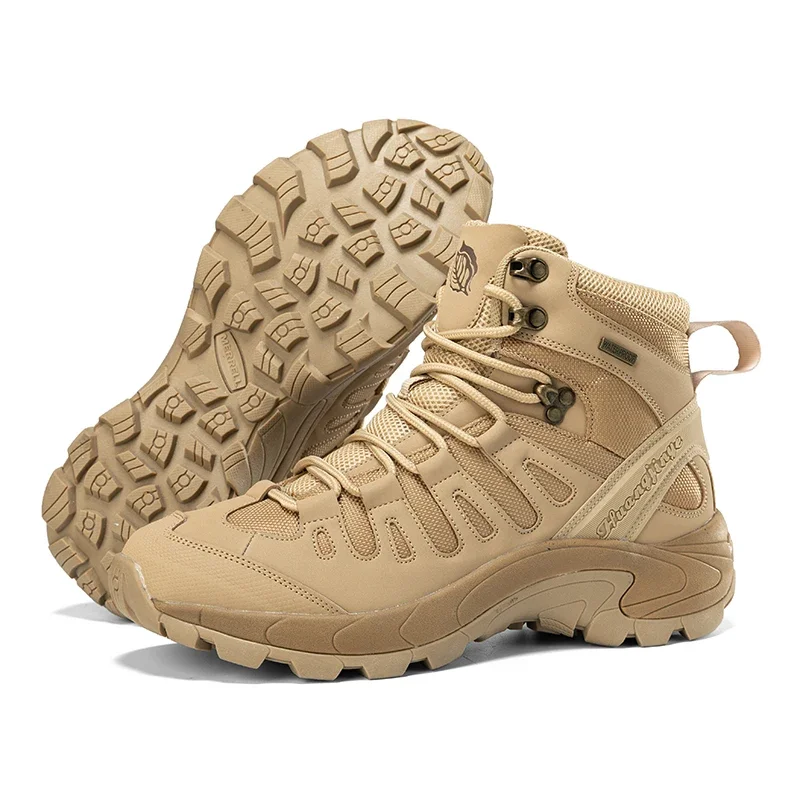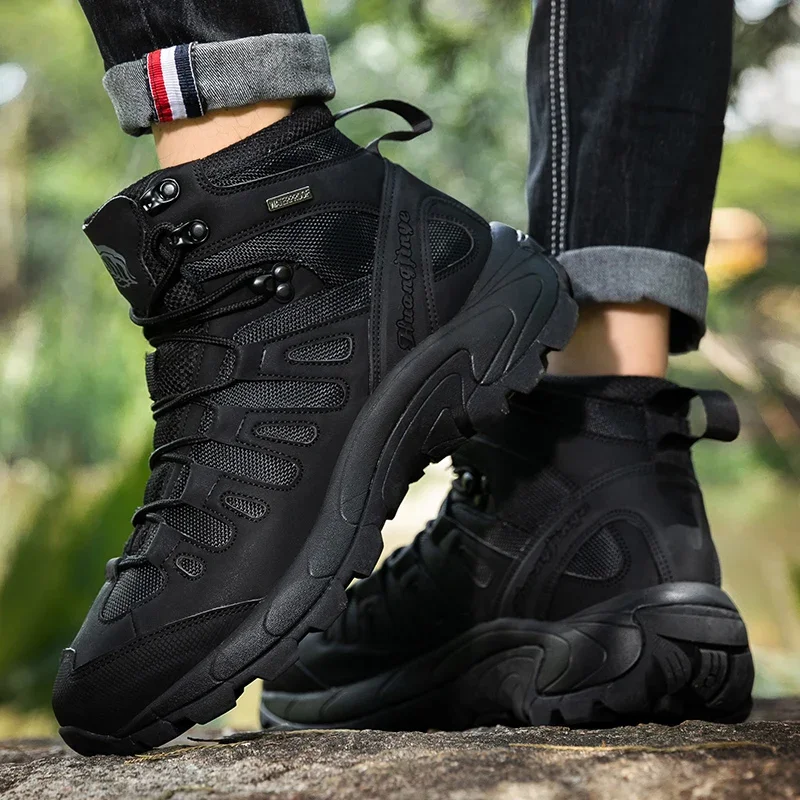I. Introduction

A. Importance of Snow Hiking Boots
When it comes to winter outdoor adventures, having the right footwear is essential. Snow hiking boots offer the necessary protection, support, and comfort to navigate snowy and icy terrains. This article will delve into the importance of snow hiking boots and provide an overview of the key features and types available.
B. Overview of the Article
In this article, we will explore the key features of snow hiking boots, including their waterproof and insulation properties, traction and grip, as well as support and stability. We will also discuss the different types of snow hiking boots, such as insulated winter hiking boots, mountaineering boots, and snowshoeing boots. By understanding these aspects, you’ll be able to make an informed decision when selecting snow hiking boots for your winter adventures.
II. Understanding Snow Hiking Boots
A. Key Features of Snow Hiking Boots
- Waterproof and Insulation Properties Snow hiking boots need to be waterproof to ensure your feet stay dry in wet and snowy conditions. Look for boots made with waterproof materials and a moisture-wicking lining. Insulation is also important to keep your feet warm, so consider the level of insulation needed based on the temperature and climate you’ll be hiking in.
- Traction and Grip Snowy and icy terrains can be slippery, so having boots with excellent traction is crucial. Look for boots with aggressive rubber outsoles and multidirectional lugs. Some boots also have specialized technologies like Vibram soles or microspikes for added grip on ice.
- Support and Stability Snow hiking boots should provide ample support for your ankles and offer stability on uneven surfaces. Look for boots with a high-cut design and a supportive ankle collar. Additionally, a firm and cushioned midsole can help absorb shocks and maintain stability on challenging terrain.
B. Types of Snow Hiking Boots
- Insulated Winter Hiking Boots These boots are designed specifically for winter hiking and provide insulation, warmth, and weather protection. They are suitable for moderate winter conditions and offer a balance between insulation and breathability.
- Mountaineering Boots Mountaineering boots are best suited for extreme cold conditions and technical terrains. They are highly insulated, waterproof, and offer excellent traction. These boots are ideal for mountaineering expeditions or hiking in harsh winter climates.
-
Snowshoeing Boots Snowshoeing boots are designed to be compatible with snowshoes, providing a secure fit and ease of movement. They are typically waterproof, offer good traction, and have a flexible design that allows for natural foot movement.
III. Choosing the Right Snow Hiking Boots
A. Measuring and Finding the Right Fit
Finding the right fit is crucial when selecting snow hiking boots. Proper measurement of your feet and understanding the different sizing systems will help you choose the right size. Additionally, knowing your foot type and any specific considerations, such as wide feet or high arches, will aid in finding the perfect fit.
B. Determining the Necessary Insulation and Waterproofing
With snow hiking boots, insulation and waterproofing are vital to keep your feet warm and dry. Consider the temperature and conditions of your hiking environment to determine the appropriate insulation level. Insulation materials like Thinsulate and Gore-Tex are popular choices. Ensuring that the boots have adequate waterproofing features, such as sealed seams and a waterproof membrane, will prevent moisture from seeping in.
C. Considering the Terrain and Conditions
Different terrains and conditions require specific features in snow hiking boots. For rugged terrains and mountaineering, boots with a stiffer sole, higher ankle support, and crampon compatibility are essential. In milder conditions, lighter and more flexible boots may suffice. Consider the type and duration of your hikes, as well as the expected conditions, such as ice or deep snow, in order to select boots that cater to your needs.
D. Evaluating Support and Comfort
Support and comfort are crucial for long hikes in the snow. Look for boots that provide ample ankle support and a secure lacing system to prevent injuries on uneven terrain. Comfort features like cushioning, arch support, and a roomy toe box will enhance your overall hiking experience. Trying on different boots and walking around to assess their fit and comfort is recommended.
IV. Proper Care and Maintenance
A. Cleaning and Drying Techniques
Proper care and maintenance of snow hiking boots will ensure their longevity. Regularly clean your boots to remove dirt and debris, using a soft brush or cloth and mild detergent if necessary. Properly drying your boots after each use is essential to prevent odor and mold. Avoid direct heat sources and allow them to air dry.
B. Applying Waterproofing Treatments
Maintaining the waterproofing properties of your snow hiking boots is important for keeping your feet dry. Applying a waterproofing treatment, such as a spray or wax, will replenish the waterproof coating and extend the boots’ performance. Follow the manufacturer’s instructions for the specific product to ensure effectiveness.
C. Inspecting and Repairing Damage
Regularly inspect your snow hiking boots for any damage or wear. Check for loose stitching, worn-out soles, or any signs of deterioration. Promptly address any minor issues to prevent them from worsening. If necessary, consult a professional or the manufacturer for repairs or resoling.
V. Tips for Snow Hiking with Boots

A. Layering Socks for Warmth and Moisture Management
Layering your socks is an effective way to enhance warmth and manage moisture. An inner layer of moisture-wicking socks should be worn, followed by a thick, insulating pair. Avoid cotton socks, as they retain moisture and can lead to cold feet.
B. Selecting the Right Traction Devices
Snow and ice can be slippery, so equipping your boots with traction devices is essential for safety. Options include microspikes, crampons, or ice cleats, which provide added grip to prevent slips and falls. Choose the appropriate traction device based on the terrain and conditions of your hike.
C. Using Gaiters for Added Protection
Gaiters are protective covers that go over your boots and lower legs, providing additional protection against snow, moisture, and debris. They help keep your boots dry and prevent snow from entering through the top. Consider using gaiters, especially in deep snow or wet conditions.
D. Breaking in Your Boots Before Long Hikes
Before embarking on longer hikes, it’s crucial to break in your snow hiking boots. Wear them on shorter hikes or for daily walks to allow your feet to adjust and the boots to mold to your feet. This will prevent discomfort and blisters during more extended snow hiking adventures.
VI. Safety Considerations and Precautions
A. Cold-Weather Foot Care Proper foot care is essential during cold-weather hikes. Insulate your feet with warm socks and ensure proper blood circulation by avoiding tight boots. Moisturizing your feet and using foot powders or balms can help prevent dryness and irritation.
B. Frostbite Prevention Frostbite can occur in cold temperatures, so it’s crucial to protect your feet. Keep them warm and dry by wearing appropriate insulated boots and moisture-wicking socks. Monitor for symptoms of frostbite, such as numbness or discoloration, and seek immediate medical attention if necessary.
C. Recognizing Signs of Hypothermia Hypothermia is a serious condition caused by prolonged exposure to cold temperatures. Be aware of the signs, such as shivering, confusion, and slurred speech. Dress in layers, stay hydrated, and seek shelter and warmth if you or any member of your hiking group exhibits symptoms.
D. Essential Gear for Snow Hiking Aside from snow hiking boots, several other gear items are essential for safe and enjoyable hiking in the snow. These include proper winter clothing, such as insulated jackets and pants, hats, gloves or mittens, sunglasses, and sunscreen. Additionally, trekking poles, a headlamp, a compass or GPS device, and a fully charged phone are important for navigation and emergencies.
VII. Conclusion
Choosing the right snow hiking boots is crucial for a comfortable and safe winter hiking experience. By considering factors such as fit, insulation, waterproofing, and support, you can select boots that cater to your specific needs. Proper care and maintenance, along with following safety considerations and using the appropriate gear, will ensure maximum performance and longevity of your snow hiking boots. Happy snow hiking!

